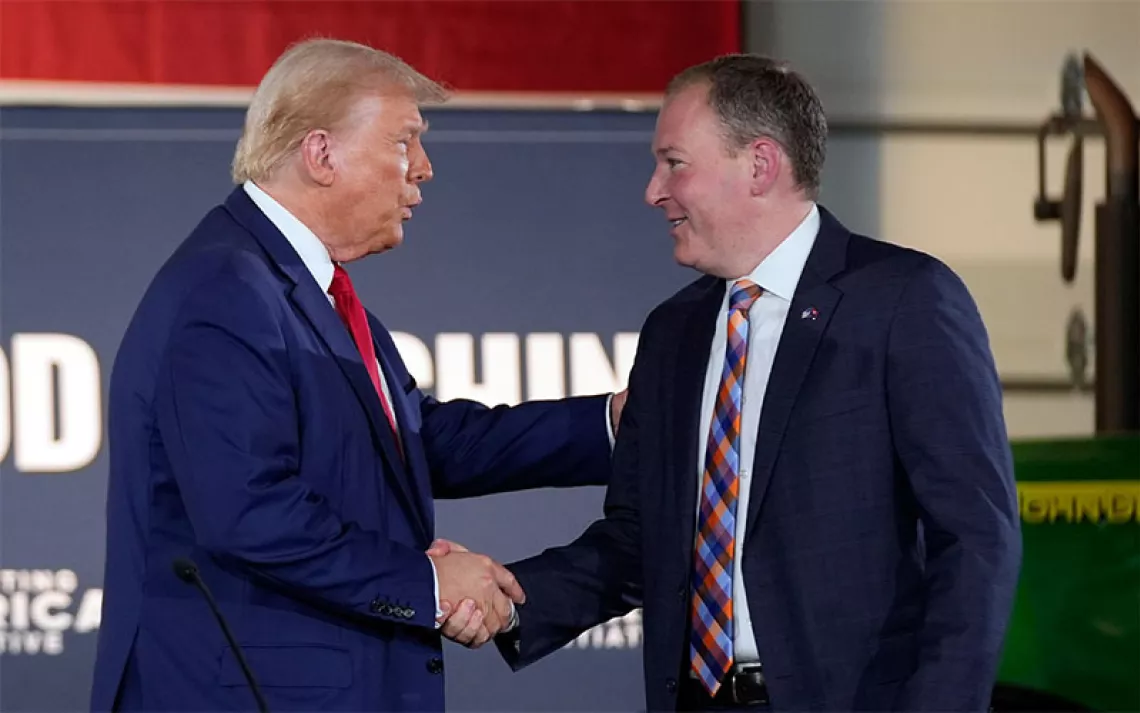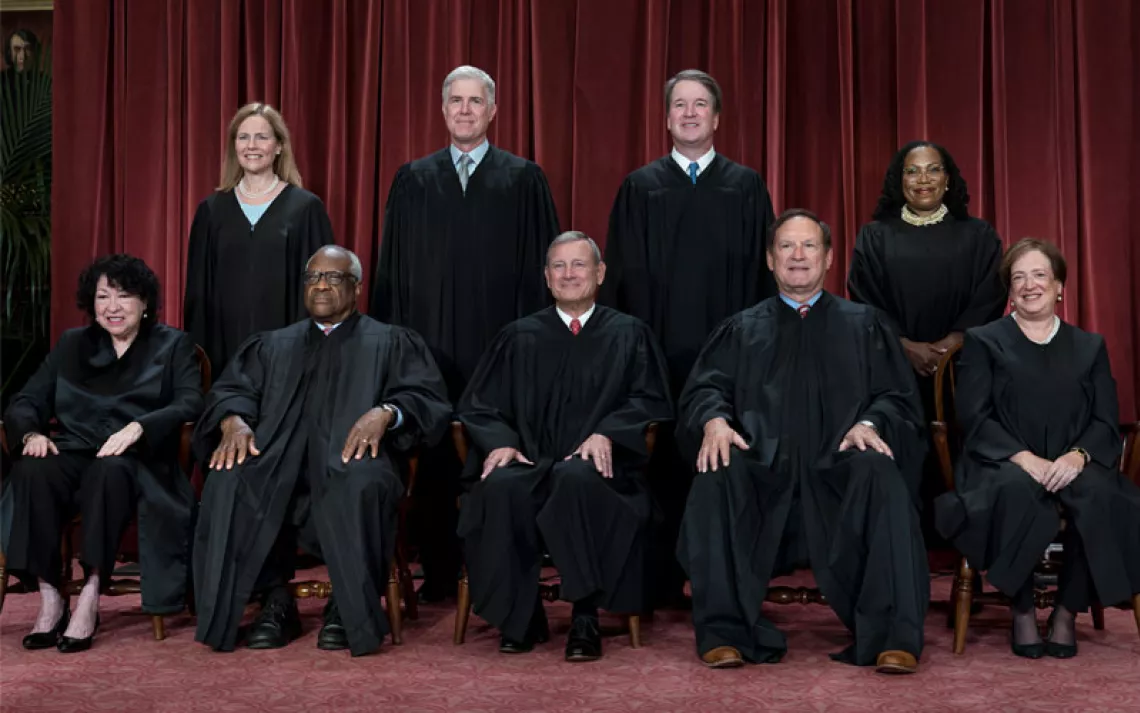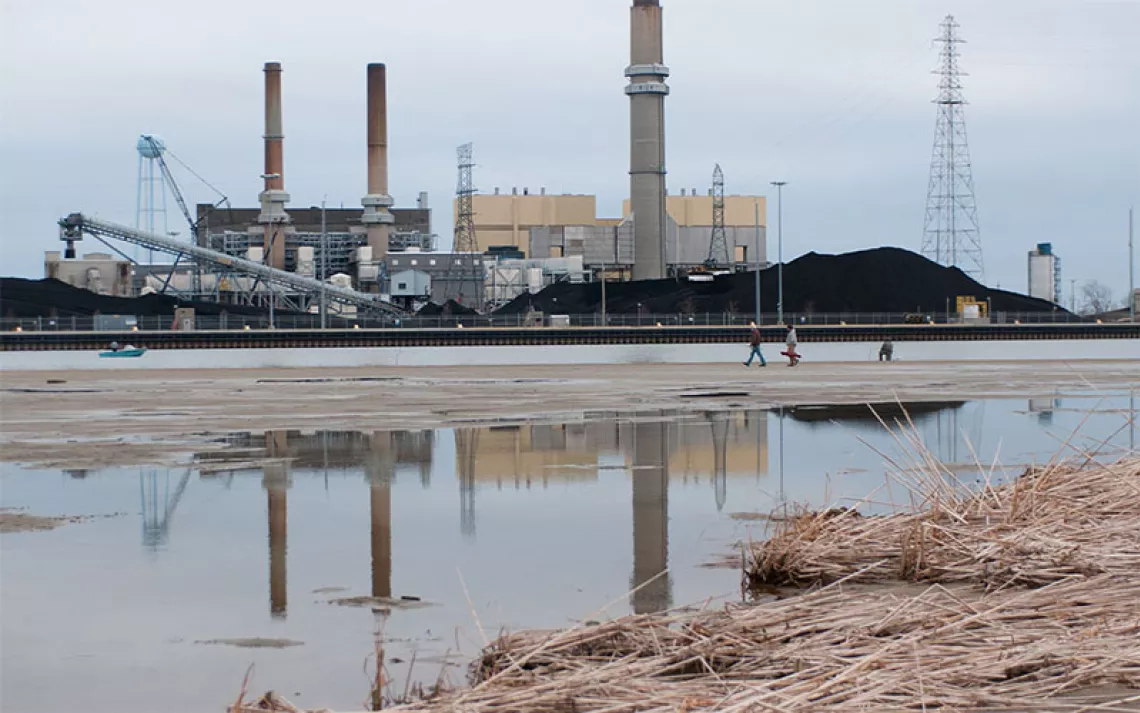Andrew Wheeler—Is He Still Big Coal’s Errand Boy?
Photo shows now-EPA administrator lobbying Rick Perry to prop up coal

Photo courtesy of Simon Edelman, Department of Energy
Less than a year prior to his appointment as acting administrator of the Environmental Protection Agency, Andrew Wheeler was a top lobbyist for Big Coal. This photo shows him in action, asking Energy Secretary Rick Perry to prop up failing coal and nuclear power plants and to cut the staff of the EPA “in at least half.”
When the above photograph and others from the same March 29, 2017, meeting were given to In These Times last December, they were mostly noted for the bear-hug camaraderie between Perry and Robert Murray (the gentleman gesturing to Perry). Murray is the head of Murray Energy, one of the nation’s largest coal companies, as well as a major financial backer of Perry and President Donald Trump. What’s striking about the photo today, however, is the presence of Wheeler, the guy in the lower right corner. At the time—and up until August 2017—the now-head of the EPA was a registered lobbyist for Murray Energy through Wheeler’s K Street law firm, Faegre Baker Daniels.
DOE staff photographer Simon Edelman was moved to release the photos (he takes issue with the word “leak,” as the information is not classified and the photos are in the public domain) in September 2017, when Rick Perry's DOE issued its “Grid Resiliency Pricing Rule.” That rule proposed bailouts for coal and nuclear power plants, based on the theory that they would be more reliable in the event of a natural disaster or other catastrophe. A study by the Sierra Club concluded that, if implemented, the scheme would cost ratepayers some $14 billion. The design of Perry’s plan was such that many of the coal plants it would subsidize were owned by FirstEnergy, which purchases two-thirds of its coal from Murray Energy.
News of Perry’s plan reminded Edelman of the March meeting he had photographed and the four-page document (“Action Plan for Reliable and Low Cost Electricity in America and to Assist in the Survival of Our Country’s Coal Industry”) that Murray and Wheeler had presented to Perry. Snippets of the document were captured in his photographs; in addition to the subsidy proposal, they included a recommendation to replace the members of FERC (a wise move, from Wheeler’s point of view, since the commission was later to nix Perry’s grid resiliency rule) and to halve the staff of the EPA.
“I saw Bob Murray give Rick Perry a list of ‘action items’ that the Department of Energy was to execute,” Edelman says. “They shook hands, hugged, and agreed to get it done. Then they kept everything that happened that day a secret. It raised a few flags.”
Indeed, when asked about any linkage between his plan and Perry’s, Murray told Greenwire (subscription required), “I didn't have any involvement. This was done by the Trump administration. . . . I had nothing to do with it.” As for Wheeler, when questioned by Senator Sheldon Whitehouse (a Rhode Island Democrat) at his November 8, 2017, confirmation hearing to be deputy EPA administrator, Wheeler said, “I did not work on that [plan] or have a copy of that memo. I saw it briefly at the beginning of the year but don’t have possession of it. I looked at it.” This, remember, is the document he and Murray are presenting at this meeting.
Following publication of the photos on December 6 in In These Times, Edelman was placed on administrative leave, and his laptop and photographic equipment were confiscated. The New York Times reported that a supervisor told Edelman to provide the DOE with administrative rights to the Google Drive where the photos were stored, and that a colleague warned him that “we can come to your home and have someone watch you delete it.” Edelman has since sought whistleblower protection through the nonprofit Whistleblower Aid and the U.S. Office of Special Counsel.
“The photos showed that the Trump administration is working for coal company CEOs, citing problems that don’t exist in order to prop up America’s dwindling coal plants that can’t compete in America’s 21st-century energy marketplace,” Edelman says. “I showed the public what they are entitled to see.”
 The Magazine of The Sierra Club
The Magazine of The Sierra Club



